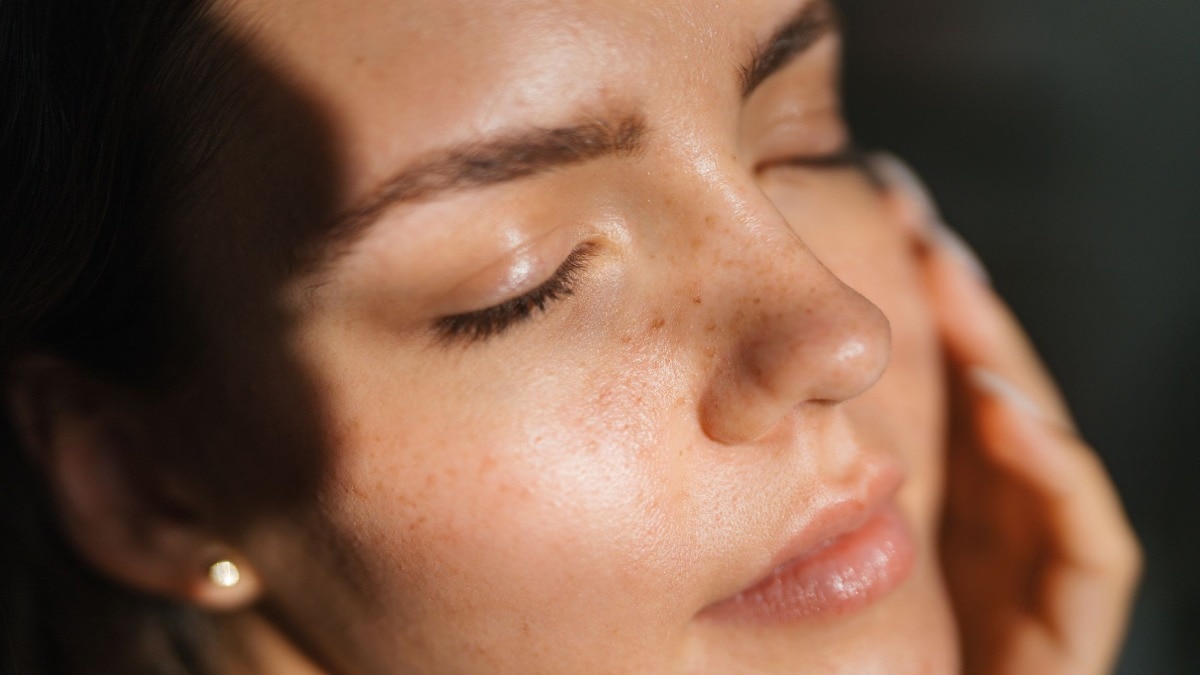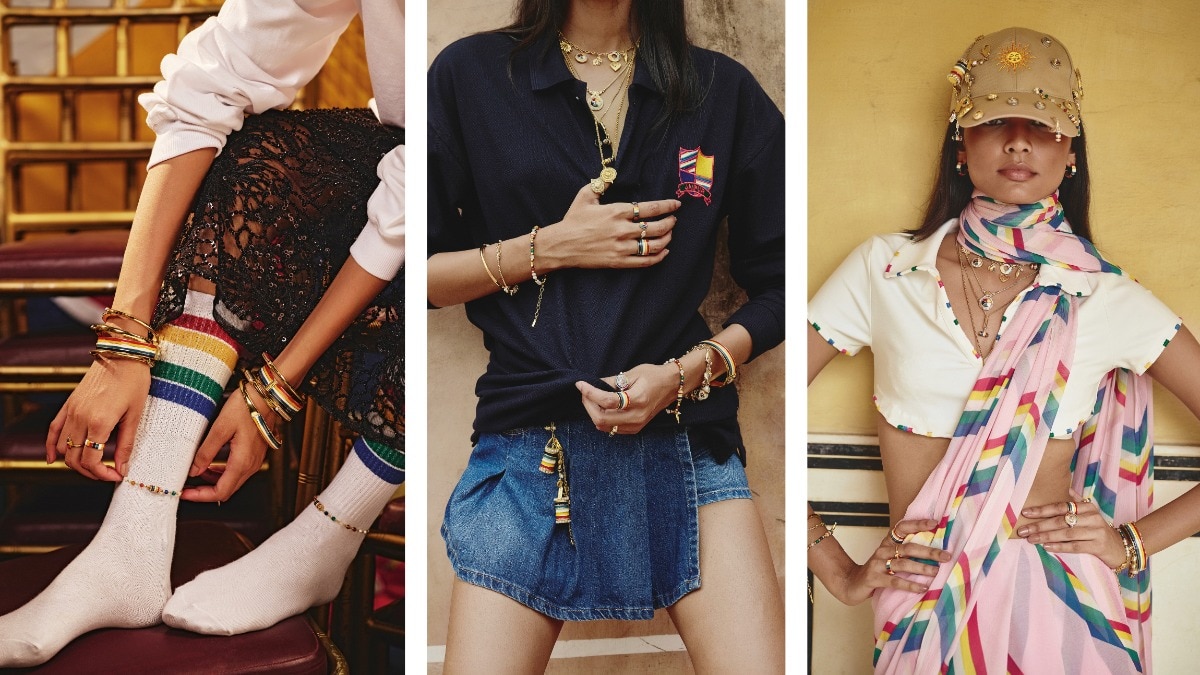
How SPF is being redesigned for the better
Charting the latest innovations in sun care that are challenging the chalky formulas of the past.


It’s a refreshing change to watch the standard skincare routine go from CTM (cleanse, tone, and moisturise) to CMP (cleanse, moisturise, and protect). Sunscreen is finally having its moment under the sun (pun intended) and the immense innovation in the category is to thank for that. “Older formulations of sunscreen often relied on thick mineral oils, which left a white cast on the skin,” explains Dr Vanita Rattan, globally renowned dermatologist and CEO, Skincare by Dr V. “Today, modern SPFs incorporate minerals such as zinc oxide in micronised forms, making them sheerer with no white residue.” We dive into what’s new about sunscreen and why we now love applying and reapplying it.

GOODBYE, WHITE CAST
Earlier, common UV filters included chemical agents like oxybenzone and octinoxate, informs Dr Rattan. “But these have raised concerns about environmental harm and potential health risks. New-age sunscreens incorporate safer and more effective filters. These include advanced chemical filters, such as Tinosorb S and M, which provide more stability and broader protection. Also, mineral filters, like encapsulated zinc oxide and titanium dioxide, improve the stability of these minerals and help to minimise white cast.” The reason for the chalky, heavy formulas of the past was mineral sunscreens were created with large particles of the aforementioned filters that sat on the skin’s surface.
“Now, advancements have allowed for micronising these minerals and grinding them into much smaller particles that blend more seamlessly into the skin,” explains the dermatologist. Even for chemical sunscreens, brands have developed lightweight chemical filters for formulations that feel less heavy on the skin. As for application, Dr Rattan says there is now a wider range of bases—lotions, gels, sprays, and fragrance-free options to avoid skin sensitivities. And, of course, the super convenient stick formats for reapplication.
WEARING SUNSCREEN IS FINALLY COOL
Even if your skincare routine includes the bare minimum steps, it is the consistency that is most essential. Using sunscreen regularly has been a challenge so far due to thick, goopy formulas. “Modern sunscreens cater to diverse skin types and preferences, prioritising consumer comfort with cosmetically elegant formulations,” says Dr Nidhi Singh Tandon, cosmetic dermatologist, and founder and medical director of The Skin Art Clinic, Lucknow. “Along with micro encapsulation, brands today also enrich sunscreens with antioxidants, anti-pollution, and anti ageing ingredients, ensuring enhanced protection and overall care. Modern sunscreens are also providing coverage to include blue light, specifically High Energy Visible Light. This helps protect the skin from potential harmful effects such as premature ageing and hyperpigmentation.”
Dr Rattan agrees and recommends choosing a sunscreen with tyrosinase inhibitors such as kojic acid, hydroquinone, and azelaic acid to treat and protect your skin if you suffer from hyperpigmentation.
THE CLASS OF 2024

While properties like ‘no white cast’, ‘lightweight’, and ‘broad spectrum protection’ used to be unique selling points, today, they’re the bare minimum requirements. When homegrown skincare brand d’you launched its blue, serum-like sunscreen, named Unkissed, this year, it quickly became a bestseller. While the product delivered its promised results, the unique choice of colour and texture helped pique interest. Shamika Haldipurkar, founder of d’you, acknowledges the advancements made in suncare, with textures that encourage consistent usage. This made adding a new one to the mix even more challenging for d’you, says Haldipurkar. “Despite having many elegant formulas in the market, an insight we kept hearing was ‘every sunscreen feels heavy on my skin’. For this segment of sceptic sunscreen adopters, we wanted to introduce a formula that neither looks like a sunscreen at first glance, nor feels like one upon application. It has UV filters in capsules, which gives it the unique appearance, and the most lightweight serum-like hydrating application.”
Deepika Padukone’s label, 82ºE, offers three different sunscreens for varying skin types. “Brands now use more potent, new-age UV filters, better stabilisers, structuring agents, and improved film formers,” says Anjali Gholap, head of R&D-Cosmetics, 82ºE. “These advancements result in highly effective sunscreens that are more comfortable to wear. Our award-winning sunscreen serum, Turmeric Shield, provides moisturising benefits along with sun protection, and is suitable for all skin types. Patchouli Glow, a light sunscreen oil, is ideal for dry skin, helping to reduce moisture loss. For oily skin, Licorice Beam offers a matte, light, and non-greasy effect that can also serve as a make-up base.” Each of these provide broad spectrum UV protection and are formulated with reef safe filters, free from oxybenzone, avobenzone, octocrylene, and octinoxate.”

HOW TO FIND THE ONE FOR YOU
While UVB rays cause sunburn, UVA rays lead to premature ageing and skin damage, and both can cause skin cancer, making broad-spectrum formulas the only ones worth using. “It is also essential that your sunscreen is ‘NAFE SAFE’ (contains no denatured alcohol, fragrance, and essential oils),” says Dr Rattan. The expert warns that not all testing houses have the same strictness in formulating SPF. While the regulation system streamlines, it’s important to pick suncare formulas from reputable brands and check for clinical test results when investing in your next one.
Lead image credit: Pexels
This article first appeared in Harper's Bazaar India, August print issue.
Also read: What are oral sunscreens and how safe are they? Three experts weigh in
Also read: Is blue light protection really necessary for our skin? Here’s what a dermatologist has to say










